Sida
Sida L.
Family:
Common names: fanpetals, mallows, sidas (Eng.)
Species
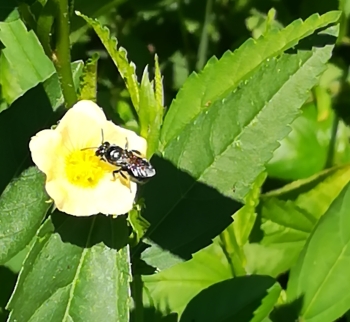
Sida acuta
Common name: wire weed (Eng.)
Woody herb with erect, long branches, up to 1.3 m tall; leaves are elongate with acute apices (lanceolate), glabrous to lightly hairy. Its flowers are pale and golden-yellow. Their sepals and fruit lack hairs. In South Africa, it is present in KwaZulu-Natal, Mpumalanga and Limpopo. Its occurrence is sparse, in open habitats along the road sides and disturbed areas. Also found in Swaziland and Namibia as well as eastern and central parts of Africa.
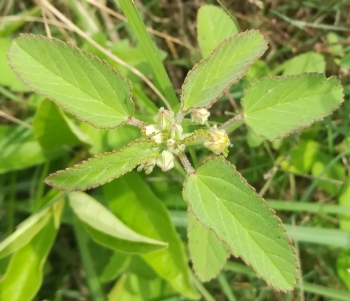
Sida alba
Common names: spiny sida, spring sida (Eng.); lente sida, stekeltaaiman (Afr.); sindanibita (Ven.)
Woody herb, stems branching from base, up to 0.75 m tall. Leaves are narrowly ovate or oblong. Flowers are solitary or in clusters in the leaf axils, white to pale yellow. In South Africa, it is present in KwaZulu-Natal, Gauteng, Limpopo, Mpumalanga and North West, where it grows in open areas in disturbed and cultivated land. Extends northwards into tropical and north Africa.
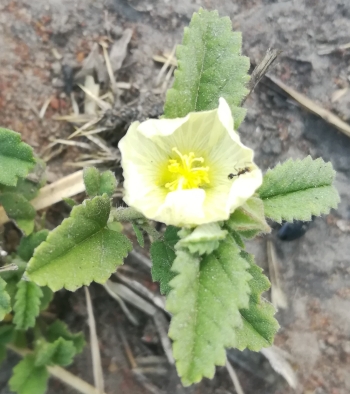
Sida chrysantha
Common name: golden sida (Eng.)
Much-branched, woody herb, up to 0.6 m tall. Stems usually slender and wiry. Leaves discolourous, oval-oblong, rounded to subacute at apex. Flowers solitary in leaf axils, pale or deep yellow to orange. In South Africa, it is distributed in the Northern and Eastern Cape, KwaZulu-Natal, Free State, Gauteng, Mpumalanga, Limpopo and North West. Also occurs in Botswana and Namibia, and in tropical Africa.
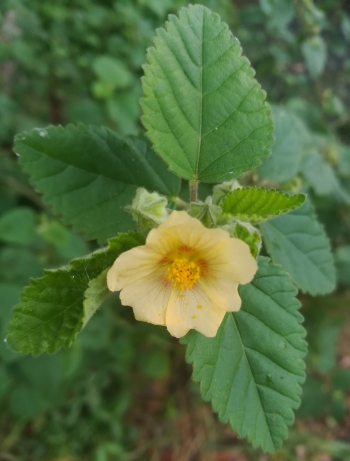
Sida cordifolia
Common names: flannel weed, koek fruit, white burr (Eng.); hartblaartaaiman, inama, koekbessie, koekbessiebossie, koekbossie, verdompsterk (Afr).
Tall subshrub, up to 1 m tall, having broad or heart-shaped (cordate) leaves with round tips, rough in texture because of the dense, small white hairs on both leaf surfaces. Flowers in small, dense clusters, bright yellow and orange, and sepals densely hairy. In most of South Africa and extending into tropical Africa. Found in disturbed soils in dry patches.
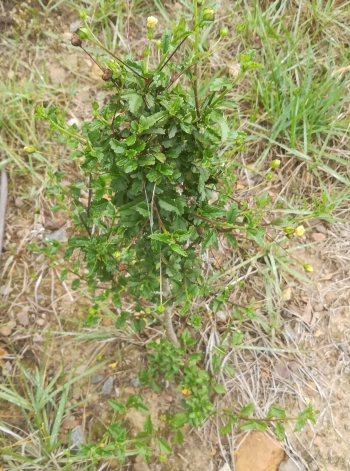
Sida dregei
Common names: sutherland’s curse, spider leg (Eng.)
Woody herb; branches erect, up to 1 m tall, young ones stiff and wiry. Leaves are ovate or lance-shaped, apex narrowed and acute. Inflorescence showy because of its long pedicels, flowers solitary in leaf axils, yellow to orange. In South Africa, the species occurs in the Western and Eastern Cape, KwaZulu-Natal, Free State, Gauteng, Mpumalanga, Limpopo and North West. It is found in road side bushes, forest margins or in between rocks. Also in Botswana, Namibia and Swaziland.

Sida ovata
Common names: mapungubwe sida (Eng.); umdiza wethafa (Zul.)
Low-growing, woody herb, up to 0.5 m high; densely grey- or grey-green-tomentose stems; wiry when young. Leaves oval or oblong or lance-shaped, apex obtuse or rounded. Flowers solitary in leaf axils or sometimes 2 or 3 flowers, white or yellow. In South Africa, it is distributed in the Northern Cape, Mpumalanga, Limpopo and North West. This species prefers dry habitats. Also in Namibia and northwards into tropical Africa.
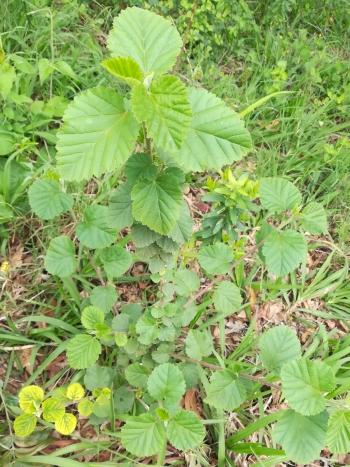
Sida pseudocordifolia
Common name: flannel weed (Eng.)
Tall subshrub, with erect branches up to 1.2 m tall, having heart-shaped leaves and orange-yellow flowers, closely resembling S. cordifolia. Has 8 to 10 mericarps in fruit capsules, compared to 10 to 12 mericarps in S. cordifolia. Less common than S. cordifolia. It is distributed in KwaZulu-Natal, Mpumalanga and North West. Grows on hill slopes.
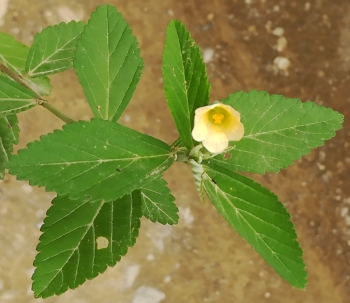
Sida rhombifolia
Common names: arrowleaf sida, common sida, rhombus-leaved sida, queenslandhemp (Eng.); pretoria sida, pretoria bossie, smalblaartaaiman, taaiman (Afr.)
Tall subshrub, erect branches up to 1 m tall, having oval, lanceolate or diamond-(rhomboid)shaped, with round tips covered with hairs, more so on lower surface. Its flowers are solitary on thin, long pedicels, white or pale yellow. Their sepals are sparsely hairy. This is the most widespread species, occurring throughout South Africa and into tropical Africa and on other continents. It is weedy and common along road sides and disturbed areas. It is also the most variable species, with several varieties in S. rhombifolia and varieties riparia and rhombifolia occur in South Africa. Recently S. serratifolia from the Limpopo Province and Swaziland was reduced to a variety in S. rhombifolia.
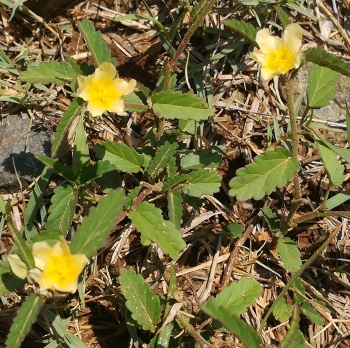
Sida spinosa
Common names: prickly sida, spiny sida, prickly fan petals (Eng.)
Woody herb, with erect branches up to 0.6 m tall and elongated to broad oval leaves with pointed or blunt tips and sometime becomes purplish red on the margins. Its flowers are solitary or in small clusters, white or pale yellow. Their sepals are finely hairy. The species grows in open dry areas. In South Africa, S. spinosa occurs in KwaZulu-Natal, Free State, Gauteng, Mpumalanga and North West. Also occurs in Madagascar.
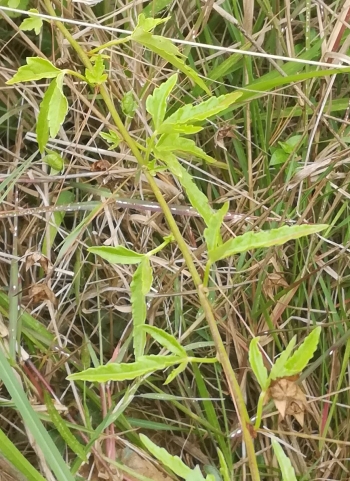
Sida ternata
Common name: three-leaved sida (Eng.)
Includes S. triloba, named for its tri-lobed leaves, a rare and diagnostic character among species of Sida. Small, woody herb; stems erect, soft up to 0.75 m. Flowers are white or pale yellow, borne on long pedicels (± 60 mm) on each leaf axil towards the apex and sometimes clustered on stem apices. The species is distributed in Eastern Cape, KwaZulu-Natal, Free State, Gauteng, Mpumalanga and Limpopo. Grows in thicket margins and prefers partial shade.
Plant Attributes:
Plant Type:
SA Distribution:
Soil type:
Flowering season:
PH:
Flower colour:
Aspect:
Gardening skill:
Special Features:
Horticultural zones
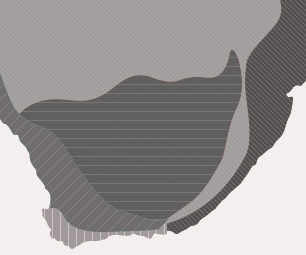





Rate this article
Article well written and informative
Rate this plant
Is this an interesting plant?
Login to add your Comment
Back to topNot registered yet? Click here to register.